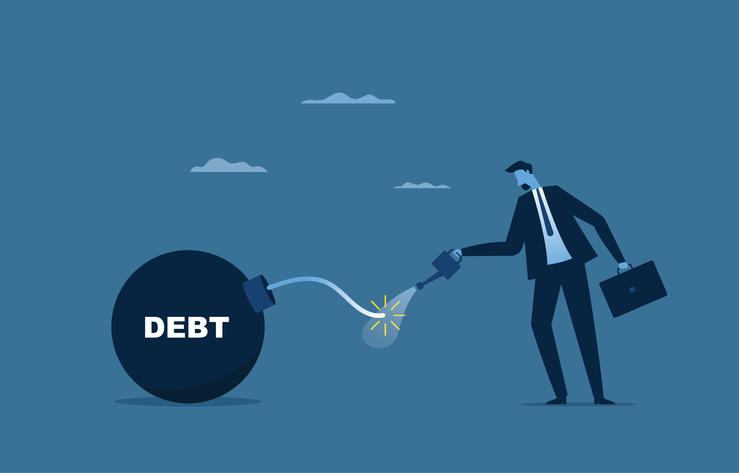Korea’s corporate debt in the non-financial sector relative to the country’s GDP grew at the second-fastest rate in the world as of September, a major warning sign for the economy already known for the fastest-growing level of household debt for the past four years straight.
Heavier interest burdens brought on by years of rising rates have been and will continue to prove restrictive in restoring the purchasing power of low-income borrowers in both the household and corporate sectors, thereby reducing consumption in the already-slow economy. The sapped vitality of the market together with elevated default risks could potentially crash the economy in a matter of months, unless policy measures are outlined and then implemented so as to insulate vulnerable borrowers.
According to a Global Debt report by the Institute of International Finance (IIF), Korea’s non-financial corporate debt-to-GDP ratio came to 126.1 percent as of September, third only to Hong Kong (267.9 percent) and China (166.9 percent).
Korea’s corporate default rate is about 40 percent, second only to the Netherlands which has around 60 percent.
“A growing number of companies with low credit ratings are showing signs of vulnerabilities, a result of reduced private lending by banks in European countries among others,” the report said. “The rising numbers of companies with higher default risks are clear illustrations of them.”
Korea’s household debt-to-GDP ratio came to 100.2 percent in the third quarter, the highest among 34 countries. The country topped the list in 2020 right after the start of the COVID-19 pandemic and has since maintained the same spot for the past four years. Korea was the only country with its GDP being exceeded by its household debt.
More concerning is the soaring household debt.
Data from Korea’s top five commercial lenders — KB Kookmin, Shinhan, Hana, Woori and NongHyup — showed their combined outstanding household loans rose more than 6.8 trillion won ($5.2 billion) in October from a month earlier. November is likely to see the growth rate remain just as fast, as evidenced by household debt coming to 689.5 trillion won as of Nov. 16, up 3.5 trillion won from 686.1 trillion won, as of the end of October.
The figure for the amount of loans to small and medium-sized enterprises as well as large corporations stood at 766.38 trillion won as of Nov. 16, up 2.69 trillion won from the end of last month.
Their loans that have not paid interest for 90 days came to a combined 2.89 trillion won as of the third quarter, up 27.3 percent from the end of last year’s 2.27 trillion won.
Data from Rep. Yang Kyung-sook of the main opposition Democratic Party of Korea, a member of the National Assembly Strategy and Finance Committee, showed that the delinquency rate of corporate borrowers came to 0.37 percent as of the second quarter, the highest since the first quarter of 2021 when it hit the same level.
“The government should outline a policy package to unburden low-income borrowers,” Seoul National University Emeritus Professor Lee In-ho said.

